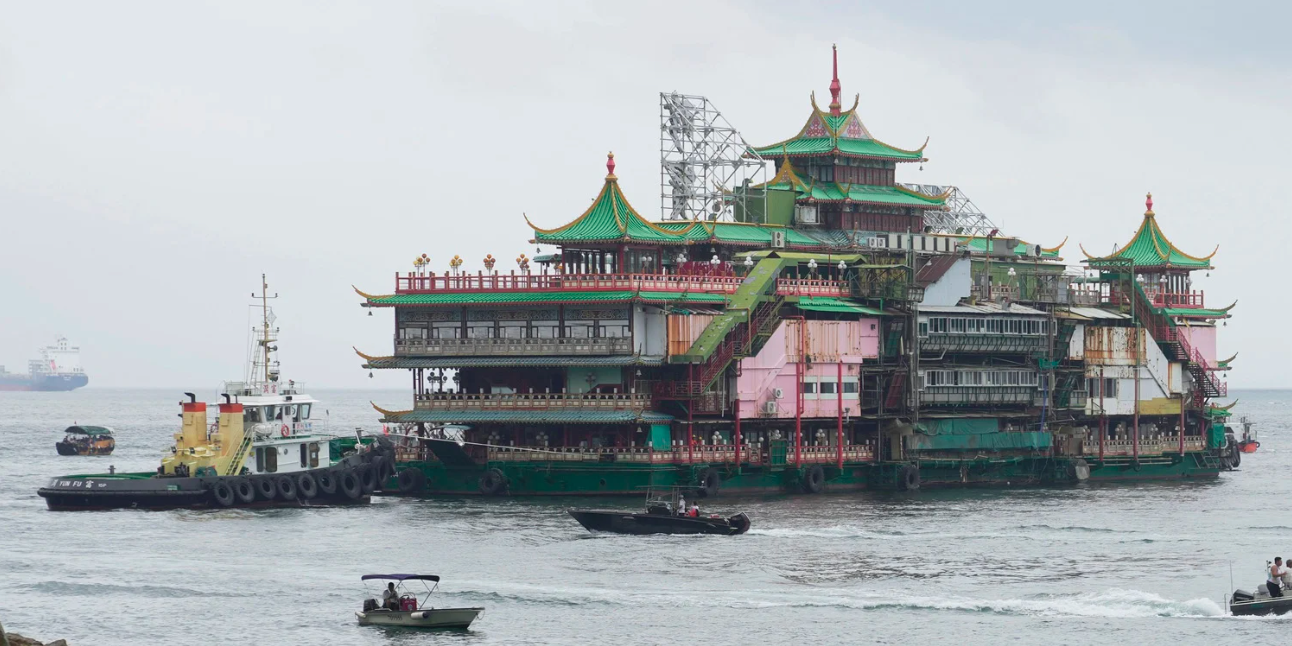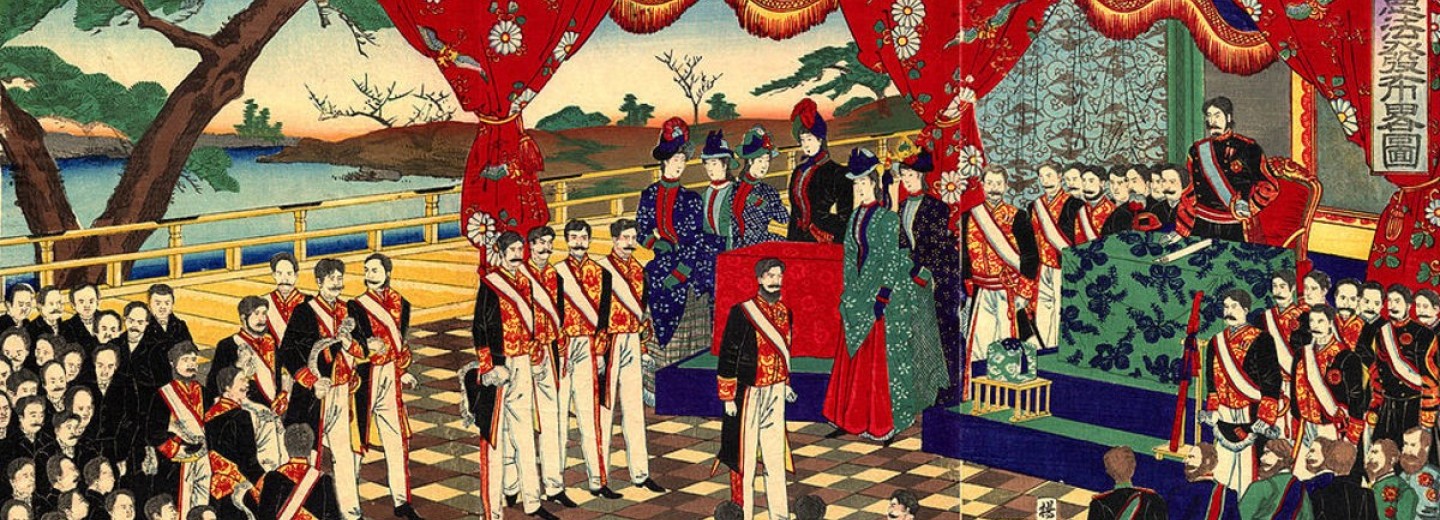China News 25th July 2022
In this week’s first story, we draw your attention towards comparatively modern East Asian History. Looking back, why did Japan's Meiji Restoration succeed, but China's Westernization Movement failed?
In Washington DC, there is a high obelisk. A small stone tablet near the obelisk, is engraved thus:
America does not set the title of prince, does not follow hereditary rules, and public affairs can be discussed by the public. These created an unprecedented situation; how extraordinary it is!
This sentence was not written by an American but by the governor of Fujian in the Qing Dynasty at that time.
The words of the governor of Fujian, to a large extent, can explain why Japan's Meiji Restoration succeeded, but China's Westernization Movement failed.
The Qianlong emperor's long 60-year reign (1736-1795) was a particularly fascinating time in China's history. During his reign, China was the wealthiest and most populous nation in the world. But when the West began the Industrial Revolution and started drastic reforms, Qianlong was still indulging in the self-satisfaction of its "Celestial Dynasty", thus missing the opportunity for the first wave of development.

Eleven years after the end of the Opium War, in July 1853, four huge black ships, rumbling and emitting black smoke, sailed into Japan's Edo Bay. This was the Perry Expedition. Commodore Perry, went ashore carring a very politely worded letter from the President of the United States to the Emperor, asking Japan to open its ports to trade with the United States. The letter also stated that the U.S. Navy would come back next spring to hear Japan's response to the president's letter.
The next year, Japan accordingly signed the "Japan-US Goodwill Treaty" with the United States, announcing the opening of the country. The process of Japan's modernization began.

Throughout the modern history of the world, no country has been able to respond as quickly and successfully to Western threats as Japan, who transformed itself into a world power in around four decades.
To understand the success of the Meiji Restoration in Japan and the failure of our Westernization Movement, we must understand from the very different responses of Japan and China to the invasion of Western culture.
Take Japan as an example. Today, Japan holds a special commemorative event every year called "Arrival of the Black Ships" to commemorate Japan's ‘aggression’ by the United States. At that time, Americans appeared as heroes, while the Japanese were treated as comical, panic-stricken clowns.

Why did China and Japan have such a different response to the invasion of Western culture?
Historian Edwin Reischauer explained that the Qing Dynasty was the biggest obstacle to reform at that time.
Although the territory of the Qing Dynasty was vast, the Qing government had the power to smash all so-called illegal local reactions. In the Qing Dynasty, there were only two possibilities: either the reaction of the Qing government, or a popular movement that subverted the Qing government.
In Japan, due to the decentralization of power, in the face of external challenges, different clans responded differently. Therefore, the probability of Japan making a correct response was much greater than that of the Qing Dynasty.
In other words, it was precisely because of the unified power structure of the Qing Dynasty that almost all the national fortunes of the Qing Dynasty were concentrated in the hands of one person, so it was easier to do wrong than to do right. Indeed, at the time of the founding of Japan, most of the feudal lords in the Japanese feudal were also mediocre and conservative, and their reactions were also stupid, such as blind xenophobia, killing foreigners and so on.
However, among the many feudal regimes in Japan, there were still a few that took correct measures, such as Japan's Mito Domain, Echizen Matsudaira Domain, Yamauchi Domain, etc. Thei reaction shows that Japan was indeed better than a unified country, having more opportunities for constructive responses than the Qing Dynasty.

In the Qing Dynasty at that time, blindness and arrogance were the core factors that led to the failure of the Westernization Movement. Of course, the distribution of vested interests was also a key factor.
In the late Qing Dynasty, the Westernization Movement allowed a group of modern enterprises to take root. However, the results of the Westernization Movement were extremely limited. The efficiency of government-run enterprises was low, and the private economy did not start.
Although the Sino-Japanese War further accelerated the rate of semi-colonialization and the national crisis became increasingly serious, everything had two sides. It was also after the Sino-Japanese War that the economy began to rise rapidly. Therefore, the real industrial revolution in the Qing Dynasty should have started in the Sino-Japanese War.
Source: new.qq.com.
In our popular post about the Jumbo floating restaurant, we told of its apparent sinking in the South China Sea. Today we hear that that tugboat crew are in a ‘dire situation’ under confinement at mainland Chinese port. The mystery about the Jumbo’s fate remains.

The crew of the tugboat that towed Hong Kong’s Jumbo Floating Restaurant are in a “dire situation” and running out of food and water after being held at a mainland Chinese port for weeks over a probe into the ill-fated journey of the iconic vessel, according to operators.
A senior official of shipping company S&P Marine, said the seven-member crew, including its captain, had arrived at Sanya Port on Hainan Island on June 30 and undergone a week of quarantine. The group was then questioned by officials from China’s Maritime Safety Administration and have been confined to their vessel ever since.
Jumbo left Hong Kong for a new home last month but capsized near the Paracel Islands in the South China Sea en route to Cambodia. While S&P Marine said the incident happened on June 18, restaurant owner Aberdeen Restaurant Enterprises, earlier said the vessel had only capsized on June 19 but had not “sunk”, refusing to provide more details of its situation.
The fate of Jumbo still hangs in the balance as the restaurant owner has not provided any update on the vessel’s latest situation. The incident has sparked widespread allegations that the vessel was sunk intentionally, a claim dismissed as “ridiculous” by the towing company which said it was just “an accident without any foul play involved”.
The restaurant owner also said last month it would not receive any insurance pay-outs over the capsizing of the vessel as it was only covered by a third-party protection policy. According to a statement by Jumbo’s owner on June 26, the tugboat that escorted the restaurant remained near the Paracel Islands to “help ensure the safety of the waterway”.
Following the accident, the tugboat stayed at sea for 12 days, with the crew struggling to prevent further accidents such as clashes with other passing ships, the source from S&P Marine said.
A spokesman for the Hong Kong Marine Department said it had not received any request for help so far from the owner of Jumbo, the vessel’s flag state or the Sansha Maritime Safety Administration.
Pointing to the fact that Jumbo was registered in Sierra Leone in May 2022, he said overseas-registered vessels navigating outside Hong Kong waters were generally controlled and managed by their registered flag states in accordance with international maritime practices.
A spokesman for the Sansha Maritime Safety Administration said they were still looking into the incident and would answer to the public in due course.
Source: scmp.com.
Worked on the article:

Wanlikhang





